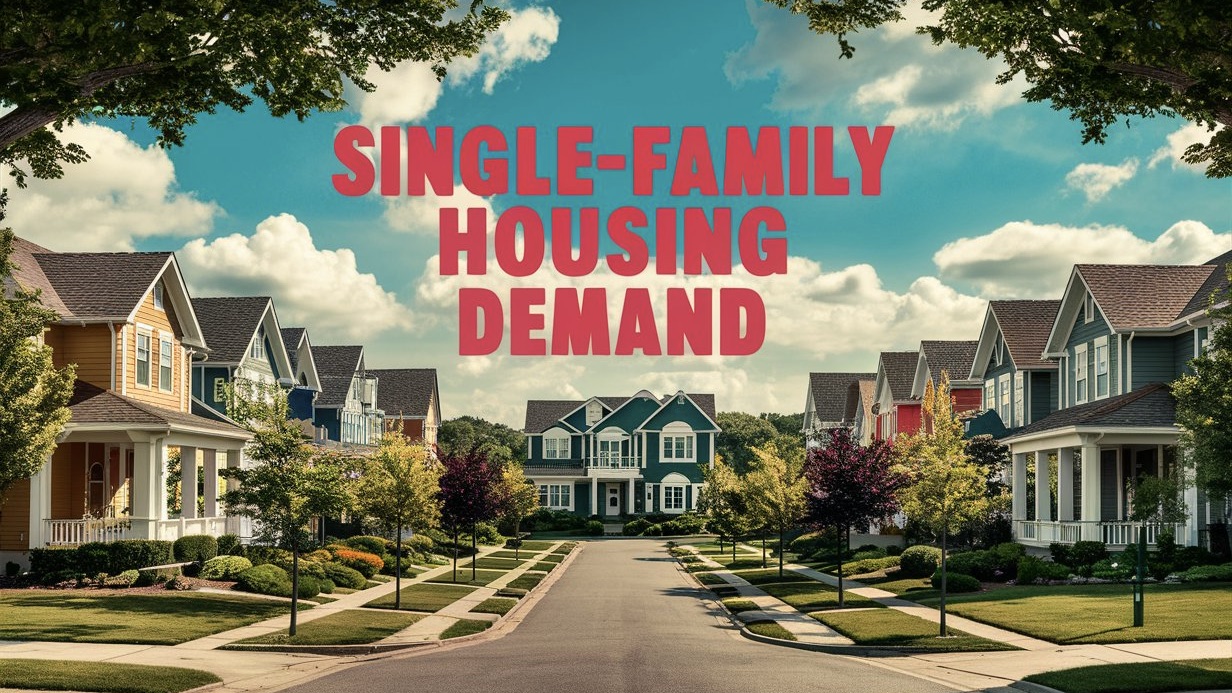In today’s dynamic real estate landscape, the demand for single-family homes is reshaping the market. Let’s dive into the key factors driving this trend and explore the broader implications of the current housing shortage.
The Growing Demand for Single-Family Homes

The migration from cities to suburbs is fueling an unprecedented demand for single-family homes. Realtors projected a 10% rise in home sales in 2021, reaching levels unseen since 2006. In 2020, online searches for single-family homes hit a four-year high, according to Redfin’s chief economist.
Several factors contribute to this surge, including low interest rates, the increased importance of home life due to quarantine and telework, and strong pre-pandemic housing trends. Millennials entering the homeownership phase are also driving suburban growth, further intensifying demand. Despite these conditions, online searches for “home loans” have recently declined, highlighting market volatility.
The Impact of Housing Shortages
The single-family housing inventory is at its lowest in 40 years, with only 830,000 homes on the market in September 2020—a 39% decrease from the previous year. Homes are selling faster, averaging just 54 days on the market, down 18% from September 2019. This intense competition has turned buying a house in some areas into a “blood sport.”
While these conditions persisted through 2021, the market is expected to stabilize eventually. New construction is projected to catch up with demand, benefiting management and construction companies as housing construction rises. However, understanding the root causes of the housing shortage is crucial.
Understanding the U.S. Housing Shortage
The housing shortage isn’t new but has been exacerbated by recent factors. Rising material costs, supply chain issues, and labor shortages stemming from COVID-19 have all negatively impacted housing inventory. Additionally, the U.S. has struggled to keep up with the housing demands of a growing population, particularly among millennials.
Institutional investors buying up housing inventory and the lingering effects of the Great Recession have also contributed to the shortage. New home builds plummeted during the recession and have yet to recover fully. High mortgage rates further complicate the market, deterring buyers and sellers alike.
The Broader Economic Impact
The housing shortage affects almost every aspect of the economy. Rising home prices make it difficult for all but high-income earners to enter the market, exacerbating inflation and wealth inequality. Higher housing costs hinder labor mobility, making it harder for people to relocate for jobs and for employers to find workers.
The lack of new housing also stifles economic growth. Homebuilding is a significant contributor to GDP, and the frozen housing market impacts related industries, such as furniture and appliances. For middle-class families, homeownership is a crucial means of building wealth, and being shut out of the market widens the gap between financial haves and have-nots.
Looking Ahead
The housing shortage is a complex problem with no easy solutions. While lower interest rates and increased housing builds could help, high material costs and labor shortages persist. The current interest-rate environment is also discouraging many homeowners from selling, further limiting inventory.
Addressing this issue requires coordinated efforts from local, state, and federal officials to reform zoning laws and promote affordable housing. Building more homes is essential to meeting the demands of a growing population and ensuring a balanced real estate market.
At Brazoban Realty Group, we understand the challenges of navigating the current housing market. Whether you’re looking to buy, sell, or invest, our team is here to provide expert guidance and support. Leave a comment and subscribe to our newsletter for the latest updates and insights on the real estate market!
Sources
- Exploding Topics
- DICCON HYATT for Investopedia
- Jess Ullrich for Bankrate




